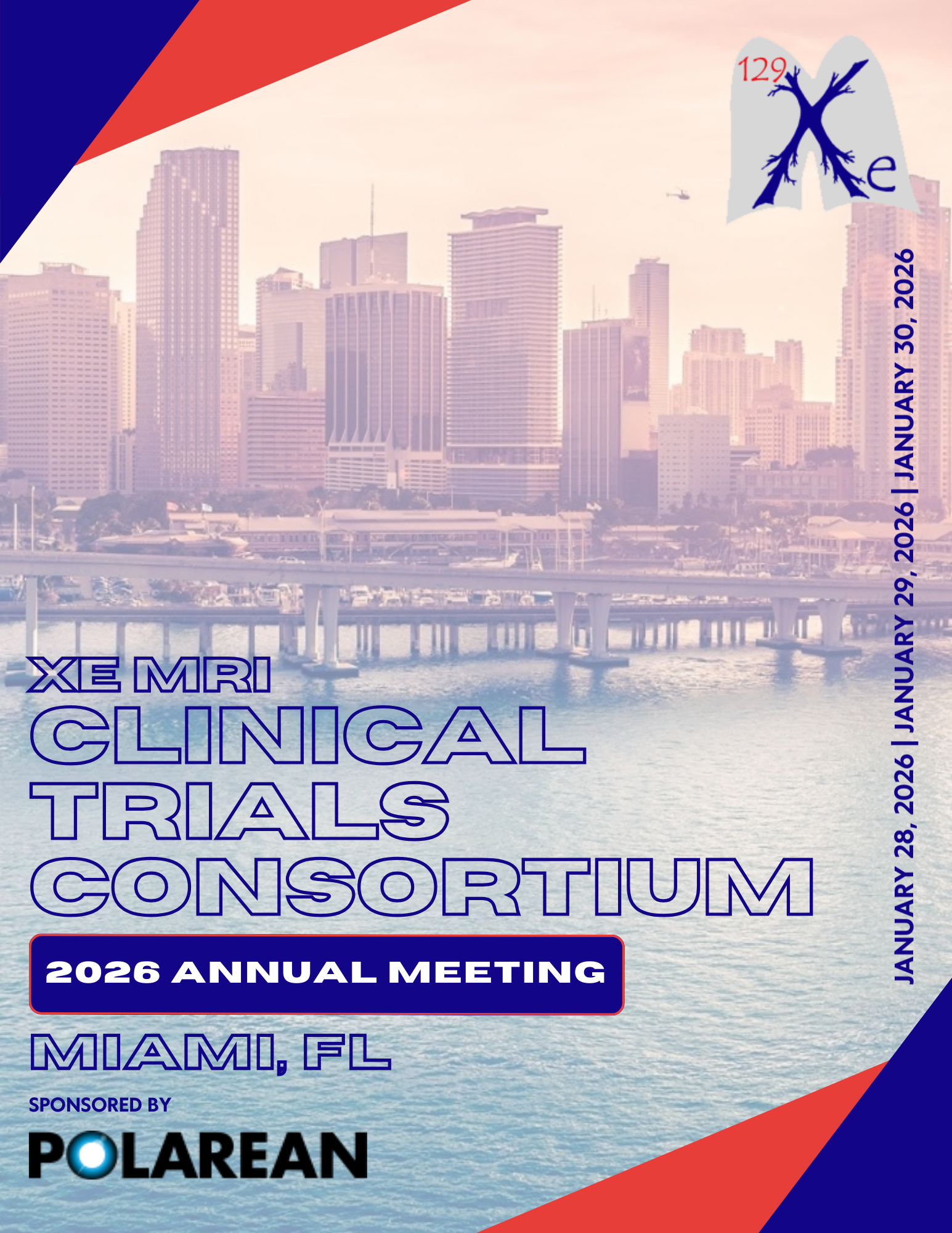The Xe MRI Clinical Trials Consortium (Xe MRI CTC) was established in 2015 and now consists of 13 Clinical Research Centers with established 129Xe in-vivo MRI capabilities and independent INDs (or equivalent) within North America and Europe. These sites are in Cincinnati, OH, Columbia, MO, Charlottesville, VA, Durham, NC, Hamilton, ON, Iowa City, IA, Kansas City, KS, London, ON, Sheffield, UK, Toronto, ON, Vancouver, BC, Hanover, Germany, and Aarhus, Denmark.
Consortium Overview
Many Thanks to Our Annual Meeting Sponsors!
Purpose of the Consortium
The purpose of this cooperative research consortium is to facilitate clinical research, education, and awareness of the capabilities of Xe MRI through support for:
Collaborative clinical research in both adult and pediatric lung diseases, including longitudinal studies of individuals with lung disease, cross sectional clinical studies, phase one, two, and three trials, and/or pilot and demonstration projects.
Training of scientific and clinical investigators in hyperpolarized gas research.
Providing a test bed for novel approaches and technologies for biomarkers and image guided interventions.
Offering a platform for sharing protocols, MRI sequences, and image analysis algorithms for the associated institutions.
Developing and maintaining an international lung MRI database to serve as a centralized repository for shared imaging data, with the goal of enhancing standardization and harmonization across all Consortium sites.
Working collaboratively with private industry where appropriate to achieve scientific goals.
Each of the individual Clinical Research Centers is comprised of basic and clinical investigators, institutions, CTSAs, and relevant organizations, for the utilization of hyperpolarized gases in translational research.
This cooperative program facilitates:
Identification of biomarkers for disease risk
Mechanisms for monitoring disease severity/activity
Development of image guided interventions
Tracking responses to treatment
Identification of clinical outcomes
Upcoming Industry Events
FDA Approval of Hyperpolarized Xe MRI
FDA approved the use of hyperpolarized Xe MRI for the evaluation of lung ventilation in adults and pediatric patients aged 6 years and older. This expands the opportunity for pulmonary medicine to utilize the first and only inhaled MRI hyperpolarized contrast agent for novel visualization of lung ventilation without exposing patients to any ionizing radiation and its associated risks. More than 30 million Americans suffer from a chronic lung disease and there is a significant unmet need for non-invasive diagnostic technology. Furthermore, this imaging technique can provide pulmonologists, surgeons, and other respiratory specialists with regional maps of ventilation in their patients’ lungs to assist them in managing their disease. Read more.











